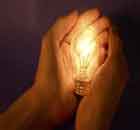Science and Health
Scientists say tsunami models should be tested
(Agencies)
Updated: 2010-03-02 15:43
 |
Large Medium Small |
HONOLULU – In the coming months and years, scientists will pore over reams of data from what turned out to be the minuscule tsunami that reached Hawaii on Saturday.
But already, some scientists are saying there is less need for additional measuring equipment of the kind that was placed in the Pacific Ocean after the devastating tsunami that killed 230,000 people around the Indian Ocean in 2004.
Instead, they say there should be a rigorous examination of long-standing assumptions within computer-generated models that are used to estimate the strength and impact of tsunamis.
"Our main problem right now is that we have unsubstantiated assumptions built into our warning system and we really have to check those," said Gerard Fryer, a geophysicist at the Pacific Tsunami Warning Center in Hawaii and formerly a professor at the University of Hawaii.
Had he been asked a week ago whether a magnitude 8.8 earthquake in Chile would cause a destructive tsunami in Hawaii, "I would have said, 'Unquestionably. It's going to be a bad scene,'" Fryer added. "Well, it wasn't. And we have to figure out why it wasn't."
The small tsunami generated by Saturday's quake in Chile also may provide an impetus for the Pacific Tsunami Warning Center to more fully adopt a forecasting system developed by another National Oceanic and Atmospheric Administration agency.
From the data gathered so far, the system designed by the Center for Tsunami Research in Seattle appears to have accurately estimated the severity of the tsunami that reached Hawaii.
"Our forecast played out pretty well," said Vasily Titov, the center's director. Because the system is still in development, its results were initially shared only with Pacific Tsunami Warning Center officials and not the public or news media, he added.
One assumption that Fryer said should be reassessed presumes that the Chilean quake occurred in deeper waters than actually happened. A rupture in deeper seas would have displaced more water and thus resulted in a larger tsunami, Fryer said.
The 1960 Chile quake that spawned huge waves that killed dozens on the Big Island and in Japan featured a longer interval between waves, about 30 minutes, than did the tsunami that lapped at Hawaii's coasts on Saturday, which were about 20 minutes apart. But the current models do not sufficiently take intervals into account, Fryer said.
The models also did not calculate "dispersion," which reduces the strength of tsunami waves as they spread out over the vastness of the Pacific Ocean, Fryer said. However, adding that factor into the models would greatly increase computational costs, he added.
That is not to say that tsunami warnings should not have been issued, he said. Some data such as that from deep sea gauges off the Peruvian coast indicated a destructive tsunami was in the offing, Fryer said.
Since the 2004 Indonesian tsunami, the oceanic and atmospheric administration has won funding to place more deep sea gauges in the Pacific, from a half-dozen to 32 now, said Charles McCreery, director of the Pacific Tsunami Warning Center.
But fewer of them are stationed off South America than in the Alaska region because tsunamis generated off Alaska will reach Hawaii and the West Coast faster, he said.
"This will be a very important benchmark tsunami because it was recorded all over the Pacific," McCreery said, noting that in addition to its deep sea gauges, his agency collects data from well over 100 coastal meters.
Among the models whose performance will be reviewed is the one developed by NOAA's Center for Tsunami Research, which is called MOST, or Method of Splitting Tsunami.
Titov said the model will be compared with data from gauges and other sources to determine its accuracy. The MOST model has performed well in analyzing smaller tsunamis, McCreery said. And Fryer said it is used by the Pacific Tsunami Warning Center now, alongside a homegrown model.
But Fryer contended that neither model accurately calculated that the tsunami that arrived in Hawaii Saturday would be minimal.










